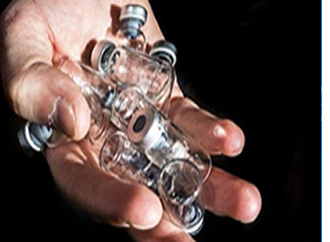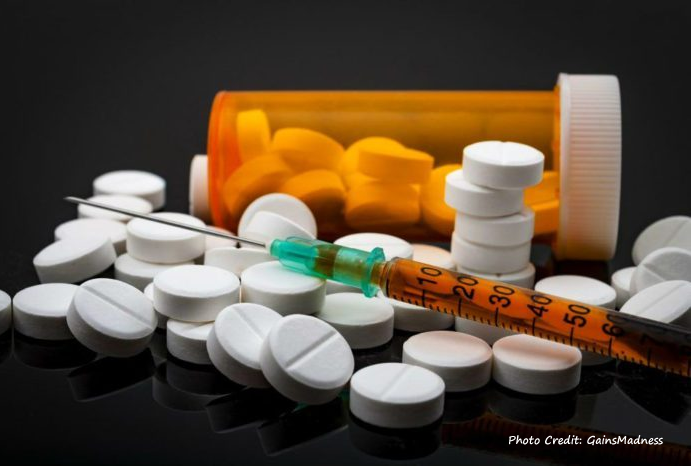What Constitutes a Level Playing Field in Combat Sports?
“I’m in these situations trying to be logical, and I don’t think most people in MMA are,” Daniel Cormier told MMAJunkie.com in a January 3, 2019 article titled, “Daniel Cormier: Are steroid metabolites ‘part of the deal now’ with Jon Jones?” by author Steven Marrocco. According to the report, Cormier, the 2008 Beijing Olympic team captain, expressed his frustration with Jones seemingly getting a green light to compete despite testing positive for performance enhancing drug use. As BoxingInsider.com previously reported in taking, “A Closer Look at Performance Enhancing Drugs in Sports,” and more recently, “Jon Jones Fails CSAC Mandated VADA Drug Testing,” Jones is no stranger to flagged performance enhancing drug test results.
According to BoxingInsider.com, “In a January 25, 2019 Bad Guy Inc. YouTube video titled, “When did a failed drug test, stop being a ‘failed drug test?'” current Bellator fighter and ESPN analyst Chael Sonnen weighed in on the issue, going on record to state:
“But now the question comes down to how three agencies test him all in the same night and two of them missed it. I’m a little confused how there isn’t a spotlight and a question mark on how USADA, with an 11-million-dollar yearly budget missed it on the same night that California, who then submitted it to the WADA lab at UCLA, missed it, but VADA who collected the sample on the same night, submitted it to the same lab, caught it.”
Completely legitimate points and questions, some of which lead to more questions than answers. Not only is Sonnen confused, but you should be too. Exactly what is going on here, and who is regulating the regulators?
 In a December 2, 2008 Spiegel.de article titled, “Interview with Former Anti-Doping Czar 'Doping Is Organized along Mafia Lines',” former president of the World Anti-Doping Agency (WADA) Richard Pound, states that, “Doping is not an exception in cycling, there is a doping culture.” Not only is there a doping culture in cycling, but within the ranks of combat sport athletes as well. According to an August 9, 2016 MMAFighting.com article titled, “Conor McGregor says Nate Diaz is right: ‘They (expletive) all are on steroids’,” author Marc Raimondi writes, “They’re all on steroids. You’ve heard Nate Diaz say it time and time again regarding his peers in mixed martial arts.” And considering fighters to this day, one by one, continue to be flagged for performance enhancing drug use, despite the “USADA era” of the UFC, it’s hard to deny this point of view.
In a December 2, 2008 Spiegel.de article titled, “Interview with Former Anti-Doping Czar 'Doping Is Organized along Mafia Lines',” former president of the World Anti-Doping Agency (WADA) Richard Pound, states that, “Doping is not an exception in cycling, there is a doping culture.” Not only is there a doping culture in cycling, but within the ranks of combat sport athletes as well. According to an August 9, 2016 MMAFighting.com article titled, “Conor McGregor says Nate Diaz is right: ‘They (expletive) all are on steroids’,” author Marc Raimondi writes, “They’re all on steroids. You’ve heard Nate Diaz say it time and time again regarding his peers in mixed martial arts.” And considering fighters to this day, one by one, continue to be flagged for performance enhancing drug use, despite the “USADA era” of the UFC, it’s hard to deny this point of view.
McGregor, perhaps mixed martial arts most polarizing figure, was quoted as stating during a UFC 202 conference call, “The boy is not far along – they (expletive) all are on steroids. So, it is (expletive) up. The co-main and main at 200. That’s messed up to me. I don’t know,” said McGregor. The author Marc Raimondi would go on to remark that, “McGregor, the UFC featherweight champion, was referring to Jon Jones and Brock Lesnar both failing drug tests in relation to UFC 200 last month.”
Brock Lesnar, of course, recently announced his retirement from mixed martial arts. A move which left many in shock, clamoring for answers which range anywhere from failed contract negotiations involving pay-per-view points to questions surrounding whether Lesnar ran into USADA problems once again, himself.
The Spiegel article would go on to quote the former WADA president Richard Pound as stating that serious intervention is needed in order to make headway in the fight against doping in competitive sports. According to Pound, “The doping system is organized along mafia-like lines. So, what we need is close collaboration with the police and public prosecutors. Our weapons are too limited; we can only test urine and blood. Police investigators can read e-mails, tap telephones.”
The former anti-doping czar would go on to note of the authorities, “Their arsenal is bigger than a bottle of pee. Getting the executive authorities onto our side is an arduous process, but we have recently started working with Interpol. Step by step we are moving ahead.”
As a former World Anti-Doping Agency president, naturally Pound is going to be speaking from the paradigm of a watch dog, investigative body where everything is black and white. There are cheaters and non-cheaters, what meets the definition of a cheater is constituted within the rules and regulations of the WADA code. If one chooses to believe the code is beyond reproach, this is all a pretty clear cut and dry topic where the discussion ends here. To those who realize few things are black and white in life, the debate will surely continue to rage on despite the story seemingly haven already been written.
“The doping dealer Angel Heredia says there are countless underground laboratories that manufacture drugs which cannot be detected by doping tests. Isn’t WADA fighting a battle it cannot win,” Spiegel queried of Pound.
“It will always be a race between the cheater and those who are playing fair, but we are reducing the gap. Our aim has to be for 99.9 percent of athletes not to dope, and for us to catch the remaining 0.1 percent.”
“But surely that’s unrealistic?” Spiegel retorted. And seemingly without hesitation, Pound quipped, “Do you think so?”
When asked of the news of German public television networks no longer broadcasting the Tour de France, Pound would remark, “If I were the head of a sport faced with that, I would tell my riders and colleagues: Look, if we don’t solve the doping problem, we’re all going down the drain together. We can make the stages shorter. We can introduce rest days. Something has got to happen, otherwise we’re finished.”
Calling it for what it is, the machine known as WADA, the mechanism of control whose entire basis for existence is sorting out the cheaters from the non-cheaters is continuously justifying its existence under black and white terms. According to Pound, “People have the habit of exploiting liberties to the point of self-destruction,” when asked about a proposal from John Hoberman of the University of Texas in calling for two classes of sports to be introduced, one for doped athletes and one for those who are not.
“I find that unrealistic,” said Pound. “Let me approach it from the other end: What happens if someone who uses drugs competes against those who don’t? Then we are right back where we started. And letting the doped athletes loose against each other would mean deregulating doping. That’s dangerous, because the athletes would push each other further and further so as to gain an advantage.”
Which is in fact what is already happening according to a former coach of Olympian Marion Jones. In an August 11, 2008 Spiegel.de article titled, “The Dealer Olympias,” Angel Heredia is asked if he would be watching the 100-meter final at the 2008 Beijing Olympics. “Of course,” Heredia replied before going on to add, “But the winner will not be clean. Not even any of the contestants will be clean.”
“Of eight runners,” Spiegel would write in an open-ended question,"… Eight will be doped,” Heredia would reply. Spiegel would then go on to note, “(But) there is no way to prove that.”
So, where does that leave us if the suggestion of two classes of athletes is unrealistic yet the justification for this position is in fact not grounded in reality at all? In fact, the false paradigm itself is likely the genesis of the entire mass hysteria effecting authorities, pundits and fans alike in the first place in denying the reality as expertly stated by Angel Heredia that not even a single participant at the highest levels of competitive sports will be clean.
“Clean peak performance is a fairy tale, my friend,” said Heredia. Spiegel’s Klaus Brinkbaumer would go on to ask Heredia if he was advocating for the legalization of doping in competitive sports, to which Heredia replied, “No, but I think we should release Epo, IGF and testosterone, adrenaline and epitestosterone, the substances that the body produces on its own-for pragmatic reasons.” Because, according to Heredia, “The persecution is impossible, but also because of the fairness.”
Spiegel, seemingly astonished by what Heredia is saying, asked Angel if he was being serious; fairness? “Yes, let's take the most popular drug: Epo. Epo alters hemoglobin levels, and people have different levels of hemoglobin,” explains Heredia. According to the doping expert, “The release would therefore allow justice and equality, which allegedly all want. There are genetic differences between athletes.”
 The former performance enhancing drug consultant for Olympic athletes went on to make a very fervent point, stating that, “Normal athletes have a level of 3 nanograms of testosterone per milliliter of blood; the sprinter Tim Montgomery has 3 nanograms, but Maurice Greene has 9 nanograms.” Asking a rhetorical question, Heredia would explain, “What can Tim do? Not doping with the body's own substances is unfair, nature is unjust.”
The former performance enhancing drug consultant for Olympic athletes went on to make a very fervent point, stating that, “Normal athletes have a level of 3 nanograms of testosterone per milliliter of blood; the sprinter Tim Montgomery has 3 nanograms, but Maurice Greene has 9 nanograms.” Asking a rhetorical question, Heredia would explain, “What can Tim do? Not doping with the body's own substances is unfair, nature is unjust.”
”In a March 20, 2019 NCBI.gov manuscript from the US National Library of Medicine National Institute of Health titled, “Racial variation in sex steroid hormone concentration in black and white men: a meta-analysis,” authors A. Richards, S. Rohrmann, L. Zhang et al. write, “The aim of this study was to assess racial variation in circulating testosterone, free testosterone, sex hormone-binding globulin (SHBG) and estradiol levels in men.” According to the report, “A meta-analysis was performed using weighted mean differences (WMD) to compare hormones levels between black and white men.”
The document goes on to state that, “After age adjustment, free testosterone levels were significantly higher in black than in white men (WMD = 4.07 pg/mL, 95% CI 1.26, 6.88).
According to the University of Rochester Medical Center, “Most of the testosterone in your blood attaches to 2 proteins: albumin and sex hormone binding globulin (SHBG). Some testosterone is not attached to proteins, or free.”
The Rochester.edu website goes on to explain that, “Free testosterone and albumin-bound testosterone are also referred to as bioavailable testosterone. This is the testosterone that is easily used by your body.”
In a Steroid journal abstract titled, “Racial/ethnic variations in male testosterone levels: A probable contributor to group differences in health,” originally published in February, 1992 Vol. 57, Issue 2, Pages 72 -75, authors Lee Ellis and Helmuth Nyborg write that, “Racial and ethnic variations in serum testosterone levels were investigated among a large sample of male Vietnam era veterans. Based on geometric means, significant average differences were found between 3,654 non-Hispanic white and 525 black individuals.”
Interestingly, according to the authors, “The geometric mean for testosterone levels among 200 Hispanic individuals was similar to that of non-Hispanic white individuals.” Which obviously means the 525 black individuals had significant serum testosterone level differences on average than both the 200 Hispanic and 3,654 non-Hispanic white individuals.
There are an entire host of anabolic steroids, all testosterone based, that are banned or otherwise prohibited due to their known performance enhancing abilities. Athletes regularly test positive for these exact prohibited substances in various sporting disciplines across the board, the use of these substances by any athlete who is unfortunate enough to get caught with their pants down is considered cheating. Their use constitutes an unfair advantage over the rest of the playing field, presumably at least, or as the story goes, right?
Least we not forget, testosterone, is a naturally occurring hormone in the human body. These athletes are using synthetic derivatives made in a lab and when caught using these supplements the athletes are ostracized from the sport, often times with severe consequences as a result. Considering these matters are taken so seriously in the world of anti-doping, its curious to discover that despite what the socialist indoctrination centers might suggest, we aren’t all created equal after all.
According to an April 5, 2012 MMAJunkie.com article titled, “Medical Beat: What are T/E ratios? And why do cutoff limits vary?” author Dr. Johnny Benjamin writes that, “Most men have a ratio of T to E of 1:1, which means normal men have equal amounts of T and E in their blood.” MMAJunkie.com goes on to report that, “There is some normal ethnic and time of day variation in the normal T/E ratio (as low as 0.7:1 and as high as 1.3:1).”
Dr. Benjamin would go on to write, “Statistics reveal that a ratio of up to 3.7:1 will capture 95 percent of all normal men, and a ratio of up to 5:1 will capture greater than 99 percent of all men.” Putting on our thinking cap here, if most men have a normal ratio of 1:1, yet may face competition with up to a five times greater testosterone/epitestosterone ratio one has to consider exactly what constitutes a fair and level field of play in combat sports?
And if history is any indicator of the present or future, even the various regulatory bodies themselves are not without their own black and white issues. Interestingly, according to a July 1997 paper by Brigette Berondonk and Werner W. Franke titled, “Hormonal doping and androgenization of athletes: a secret program of the German Democratic Republic government” it has even been suggested that some situations involving athletes and various state sponsors were simply covered up to give you an idea of exactly how bias, corrupt and partisan the entire process can actually be. Begging the question, who is regulating the regulators?
The only answer is a complete overhaul of the performance enhancing drug paradigm itself. Instead of accepting the machines justification for its own existence as the basis for everyone else’s version of reality, a complete de-regulation of performance enhancing drugs needs to occur. Instead of attempting to deny reality and pushing a politically correct, false narrative, the truth needs to be embraced no matter how ugly it may in fact be.
It’s time to come out of our propaganda induced mass hysteria and face reality, performance enhancing drug use is as sure of a bet in competitive sports as winners and losers on the field of play. The façade created by the performance enhancing drug monitoring agencies being little more than a revenue collection scheme, the extension of big government political theory into modern day competitive sporting.
There is nothing logical about denying the truth in order to embrace lies, it’s the kind of fallacy based, politically correct atmosphere that undermines reality and replaces it with a fantasy-based notion of combat sports that can only be described as a modern-day case of mass hysteria. Its time to emerge from the naïve pipedream the pied piper regulatory bodies espouse in justification for increasing the width of their pockets and to face the reality that performance enhancing drug use in combat sports is not the exception, but rather the rule.





